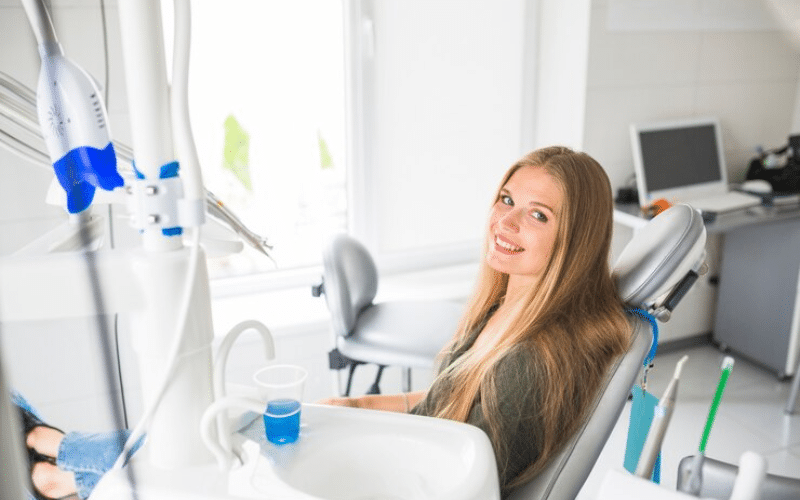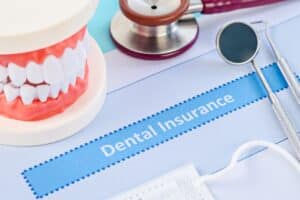Teeth whitening is one of the most used cosmetic dental procedures since it is a minimally intrusive and reasonably priced process. While teeth whitening cannot completely reverse tooth discoloration, it can provide nearly instantaneous benefits that, with proper maintenance, can endure for several months.
Most people associate in-office whitening procedures performed by professionals with teeth whitening. On the other hand, a variety of DIY at-home whitening solutions are also offered. Today, we evaluate the benefits and drawbacks of these 2 whitening solutions in this blog.
How Do They Work?
In-office teeth whitening
- It is carried out by qualified dental specialists who guarantee dependable and secure bleaching outcomes. Because dentists employ higher-concentration bleaching gels, in-office whitening procedures performed by professionals typically yield superior results.
- Many popular in-office whiteners are available, such as Lumibrite, Britesmile, Zoom, and Opalescence. While the application method and price of each product differ, the in-office whitening procedure is largely the same for all of them.
- Before starting your whitening treatment, your dentist will carefully clean your teeth to remove plaque and debris and will perform a detailed dental examination to ensure your teeth and gums are healthy. Pre-treatment photos may also be taken, allowing you to see the before-and-after results.
- To begin the procedure, a cheek retractor is used to keep the teeth exposed. A protective layer, such as a liquid rubber dam or hardening resin, is applied to the gums for protection. Then, a hydrogen peroxide-based bleaching gel is placed on the teeth for 15 to 30 minutes.
- Afterward, the gel is removed and reapplied for one or more additional 15 to 30-minute sessions. Some treatments, like Zoom, may include a high-intensity light to activate and enhance the bleaching process. While results are noticeable immediately, the full effect will become apparent after a few days.
To extend the whitening results, your dentist may advise you to avoid foods that cause staining. They might also provide a take-home whitening kit or pen to help you maintain your bright smile.
At-home Teeth Whitening
An inexpensive, do-it-yourself substitute for medical procedures is teeth whitening at home. It is typically less expensive and provides the flexibility of teeth whitening at your own speed without the need for a dentist appointment.
However, at-home whitening products contain lower concentrations of hydrogen peroxide compared to professional treatments, so the degree of whitening may be less dramatic. You can find products like whitening strips, trays, and brush-on whiteners at pharmacies, grocery stores, or online.
You may get stronger at-home whitening kits from your dentist by asking for higher-concentration whitening products. Some dentists think that these dentist-dispensed kits can achieve effects similar to in-office whitening when used consistently and correctly. Multiple applications over time may result in significant shade improvement.
The application technique varies depending on the particular product but it’s recommended to begin any at-home whitening treatment after a professional dental cleaning for optimal results. This ensures your teeth are free from plaque and surface stains, allowing the whitening agents to work more effectively.
It’s important to follow the instructions carefully, as overusing even low-concentration at-home products can lead to tooth sensitivity or damage. In addition to popular methods like trays, strips, and brush-on whiteners, there are also whitening toothpaste, mouthwashes, floss, and even chewing gum.
While these products may offer minor and temporary whitening effects, they’re not nearly as effective as traditional whitening methods and certainly don’t compare to professional in-office treatments.
Are You a Candidate for In-Office Whitening?
In-office teeth whitening is a great option for many individuals with healthy teeth and gums. However, before undergoing the procedure, your dentist will perform a comprehensive oral health evaluation.
If any underlying issues, such as tooth decay or gum disease, are present, then the high-concentration bleaching gel could cause discomfort or pain. These conditions must be treated before moving forward with the whitening process.
It’s important to understand that not all types of discoloration can be corrected with in-office whitening. Deep or “intrinsic” stains, which occur beneath the surface of the tooth, may not respond as well to bleaching treatments. In such cases, your dentist might recommend alternative cosmetic solutions, like dental veneers, to achieve the desired results.
At-home teeth whitening is more accessible than in-office treatments since there are no restrictions. Anyone can buy over-the-counter whitening products and use them independently.
However, it’s important to remember that if you have any underlying oral health issues, using these products could lead to serious pain or even cause damage to your teeth and gums.
Dentist-dispensed whitening kits are only given to patients who pass a basic oral health screening. For optimal results, it’s recommended to begin any at-home whitening regimen after professional dental cleaning to ensure your teeth are in the best condition for treatment.
If you’re interested in teeth whitening, consider discussing it with your dentist. This might assist you in deciding whether an at-home or in-office solution is more appropriate for your requirements.
The Consumer Guide to Dentistry advises consulting a dentist for a comprehensive assessment of your particular concerns.





